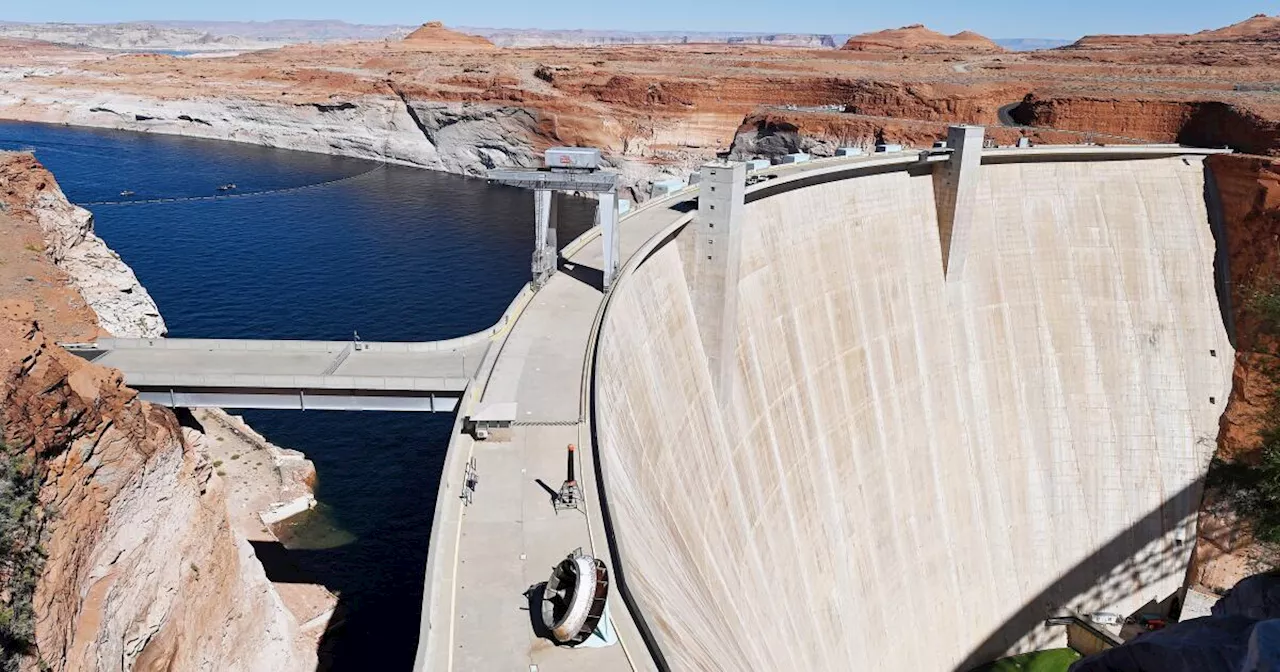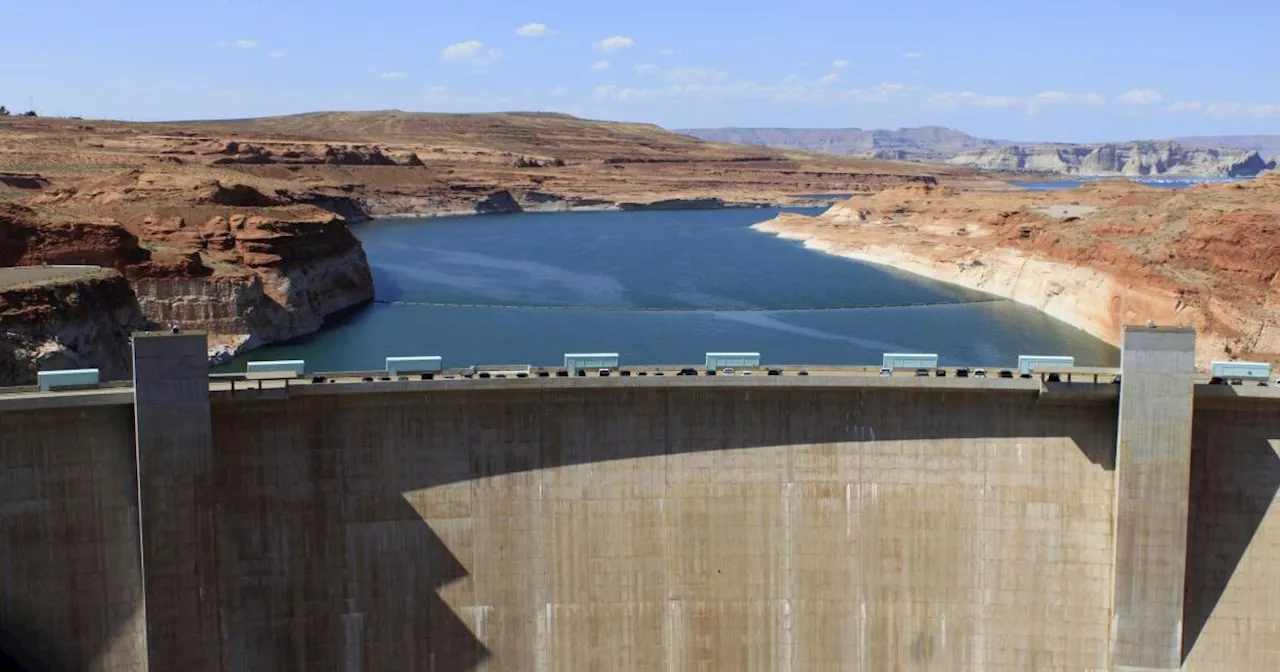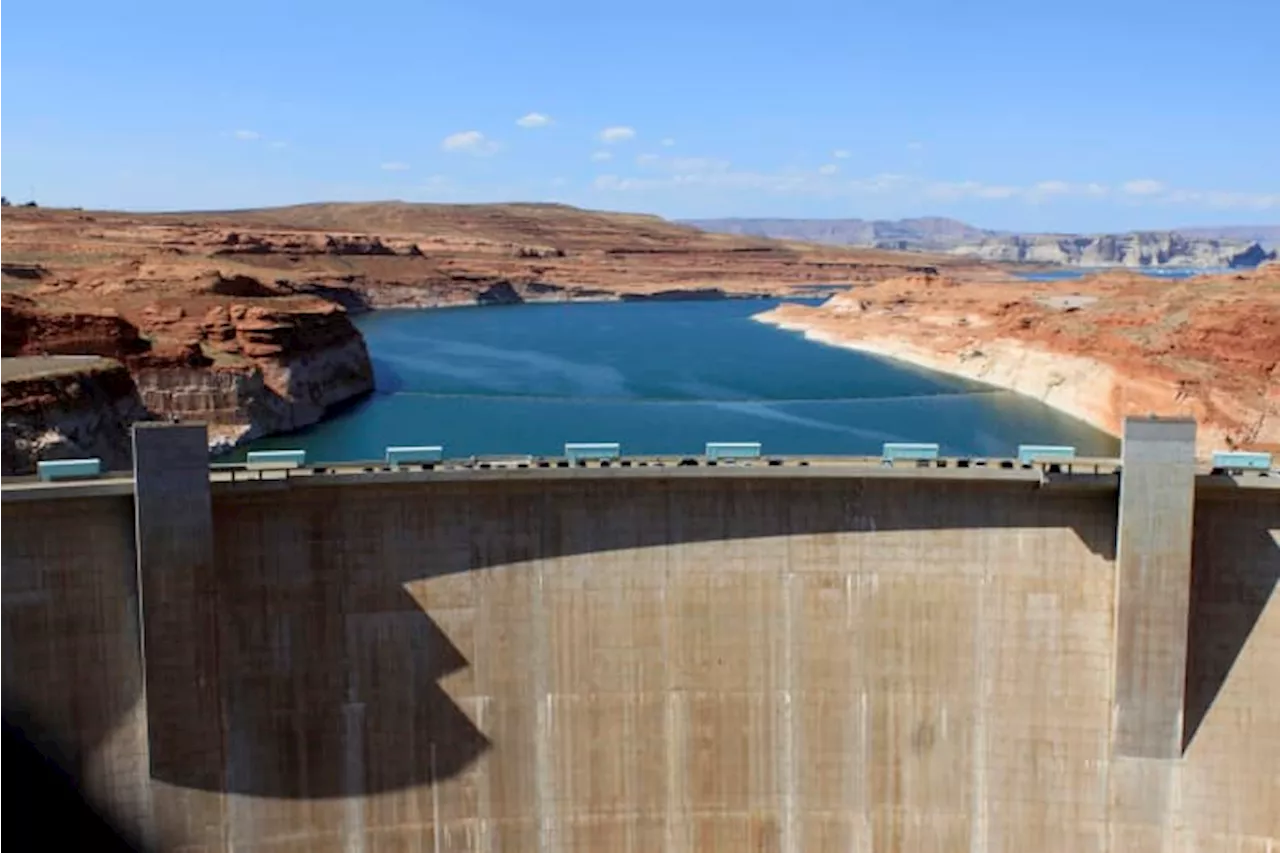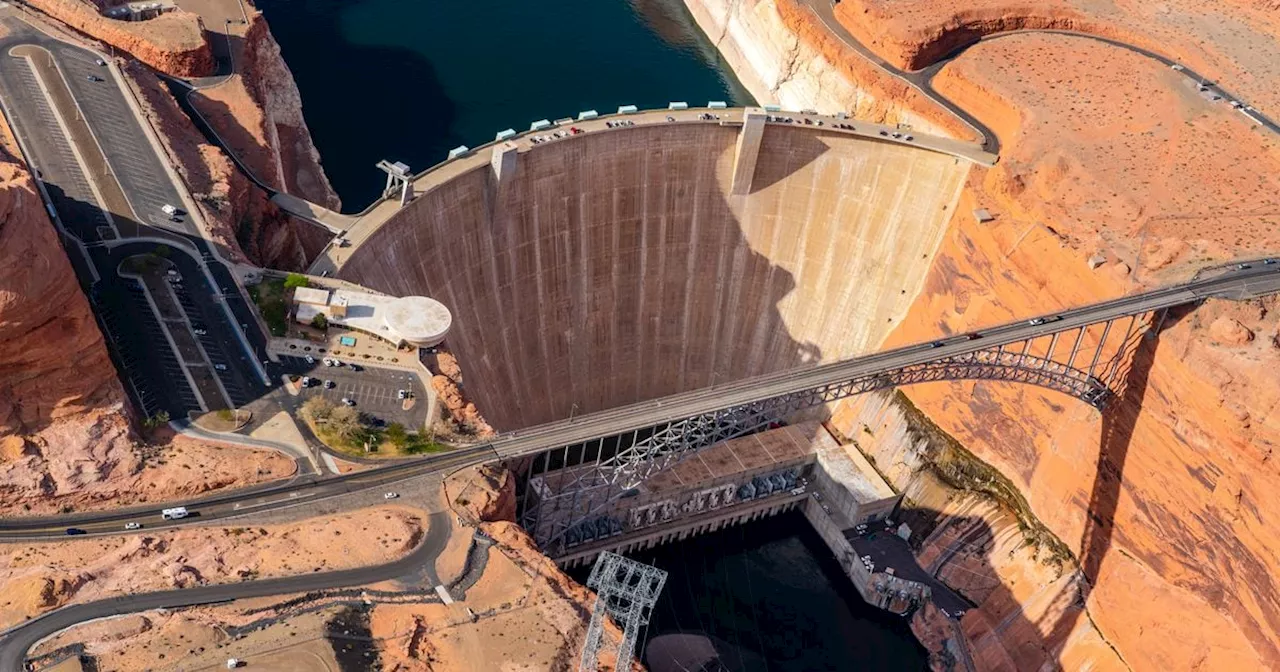Glen Canyon Dam, which creates the second-largest reservoir in the U.S., enables the distribution of Colorado River water throughout the West and generates power for seven states. It also has a plumbing problem.
Glen Canyon Dam, which creates the second-largest reservoir in the U.S., enables the distribution of Colorado River water throughout the West and generates power for seven states.. According to the Bureau of Reclamation, a federal agency that owns and operates dams across the country, four 8-foot-wide steel pipes called the river outlet works have suffered from cavitation — a process that can erode and thin pipes.
The reservoir and the dam operations aren’t yet in dire straits. Reclamation projections forecast that Lake Powell won’t dip below 3,490 feet through Feb. 2026, and the agency says it’s working on methods to deliver water downstream at elevations below minimum power pool. Water from mountain snowmelt in the Upper Basin states flows into the Colorado River, eventually pooling behind Glen Canyon Dam in Lake Powell. Reclamation releases water downstream through the Grand Canyon to Lake Mead.
Reclamation says that it’s considering a “a major overhaul or replacement” of the four steel pipes in the river outlet works to ensure water delivery if water can’t be released any other way,is maintaining Lake Powell’s elevation above minimum power pool. Achieving that goal could affect each basin in different ways.
“It’s not if, but when,” said Frankel, with the Utah Rivers Council. “The likelihood that Lake Powell reaches dead pool is all but guaranteed. Implementing bypass tubes at riverbed level doesn’t mean you’re never going to be able to raise the reservoir again. It just gives you flexibility.”
United States Latest News, United States Headlines
Similar News:You can also read news stories similar to this one that we have collected from other news sources.
 Damage found inside Glen Canyon Dam increases water risks on the Colorado RiverNewly discovered damage in Glen Canyon Dam would require releasing less water at low reservoir levels — a problem that increases water risks in the Southwest.
Damage found inside Glen Canyon Dam increases water risks on the Colorado RiverNewly discovered damage in Glen Canyon Dam would require releasing less water at low reservoir levels — a problem that increases water risks in the Southwest.
Read more »
 Plumbing problem at Glen Canyon Dam brings new threat to Colorado River systemPlumbing problems at the dam holding back the second-largest reservoir in the U.S. are spurring concerns about future water delivery issues to Southwestern states supplied by the Colorado River. Federal officials recently reported damage to four tubes known as “river outlet works” at Glen Canyon Dam on the Utah-Arizona border.
Plumbing problem at Glen Canyon Dam brings new threat to Colorado River systemPlumbing problems at the dam holding back the second-largest reservoir in the U.S. are spurring concerns about future water delivery issues to Southwestern states supplied by the Colorado River. Federal officials recently reported damage to four tubes known as “river outlet works” at Glen Canyon Dam on the Utah-Arizona border.
Read more »
 Plumbing problem at Glen Canyon Dam brings new threat to Colorado River systemPlumbing problems at the dam holding back the second-largest reservoir in the U.S. are spurring concerns about future water delivery issues to Southwestern states supplied by the Colorado River
Plumbing problem at Glen Canyon Dam brings new threat to Colorado River systemPlumbing problems at the dam holding back the second-largest reservoir in the U.S. are spurring concerns about future water delivery issues to Southwestern states supplied by the Colorado River
Read more »
 Plumbing problem at Glen Canyon Dam brings new threat to Colorado River systemPlumbing problems at the dam holding back the second-largest reservoir in the U.S. are spurring concerns about future water delivery issues to Southwestern states supplied by the Colorado River.
Plumbing problem at Glen Canyon Dam brings new threat to Colorado River systemPlumbing problems at the dam holding back the second-largest reservoir in the U.S. are spurring concerns about future water delivery issues to Southwestern states supplied by the Colorado River.
Read more »
 Plumbing problem at Glen Canyon Dam brings new threat to Colorado River systemPlumbing problems at the dam holding back the second-largest reservoir in the U.S. are spurring concerns about future water delivery issues to Southwestern states supplied by the Colorado River.
Plumbing problem at Glen Canyon Dam brings new threat to Colorado River systemPlumbing problems at the dam holding back the second-largest reservoir in the U.S. are spurring concerns about future water delivery issues to Southwestern states supplied by the Colorado River.
Read more »
 Plumbing problem at Glen Canyon Dam brings new threat to Colorado River systemPlumbing problems at the dam holding back the second-largest reservoir in the U.S. are spurring concerns about future water delivery issues to Southwestern states supplied by the Colorado River.
Plumbing problem at Glen Canyon Dam brings new threat to Colorado River systemPlumbing problems at the dam holding back the second-largest reservoir in the U.S. are spurring concerns about future water delivery issues to Southwestern states supplied by the Colorado River.
Read more »
